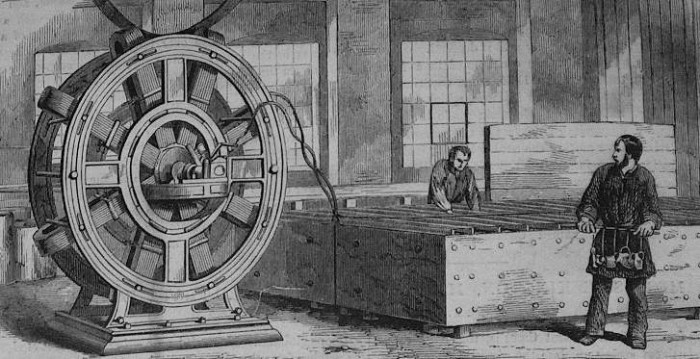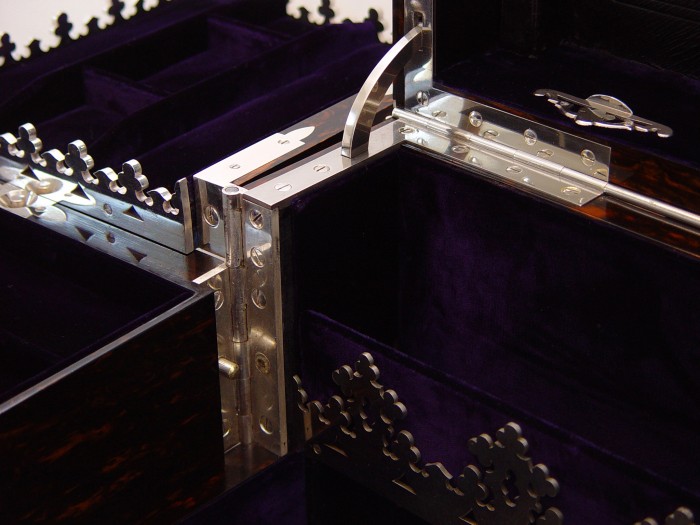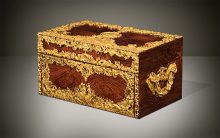Silver Plating (19th Century)
Silver plating is the method by which a base metal is coated with silver. This process is known as Electroplating and was first pioneered by Boris Jackobi, a German mathematician, in 1835. By 1840, the Birmingham based Elkington Company, run by George Richards Elkington and his cousin Henry Elkington, took out the patent for the improved process of electroplating silver, having discovered this in collaboration with surgeon, John Wright.
The Electroplating of silver involves dipping the item to be plated into an aqueous solution of silver ions. Using immersible electrodes, this item is attached to a Cathode (-) and a block of silver is attached to the Anode (+). When a battery current is passed through this circuit, the silver ions in the solution are attracted to the item attached to the Cathode, coating it with a fine layer of silver.

Elkington Company electroplating machinery, circa 1840.

Silver plated hinge and gallery from an antique jewellery box with Betjemann Patent mechanism by Jenner & Knewstub.
 Price On Application
Price On Application